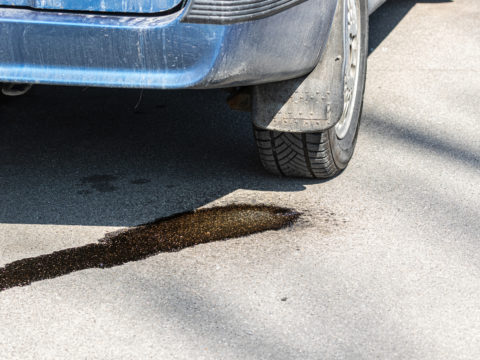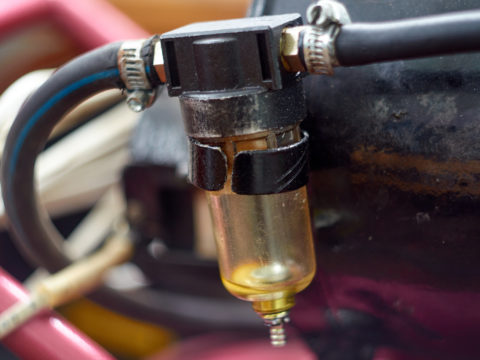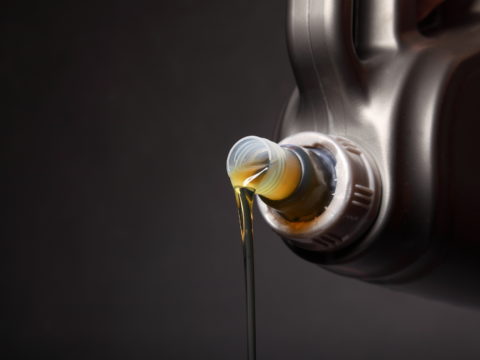Contents
Why Is Oil Pressure Important?
Oil pressure is one of the key components that allow an engine to function properly. Without proper oil pressure, the parts of an engine that rely on it will not be able to do their jobs efficiently or effectively.
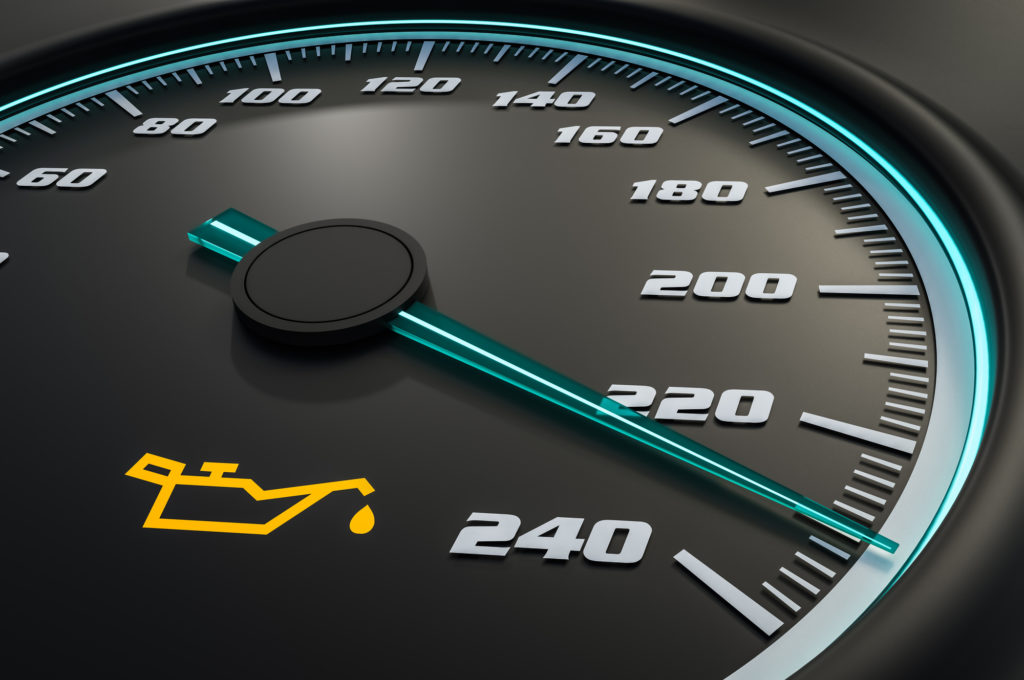
Because oil moves throughout an engine, it needs pressure to make sure it moves to the right places and keeps lubrication on all the metal parts. Otherwise, the parts will come into contact with each other and cause issues.
Typically, it doesn’t take much to maintain oil pressure, but when the oil pressure does get low, not tending to it will put an engine at risk of shutting down completely.
That said, just like driving with low tire pressure, driving with low oil pressure is highly inadvisable.
There are several reasons why you would not want to drive a vehicle that is suffering from low oil pressure, but the most major among them is the possibility of damaging the engine beyond repair.
You may be able to drive some distance with low oil pressure, but once all the oil goes, it won’t be long before the engine goes along with it. So, if your car has low oil pressure, refrain from driving it as much as possible until you resolve the issue.
How To Read Oil Pressure Gauge
Knowing how to read your oil pressure gauge first depends on what type of pressure gauge you are looking at.
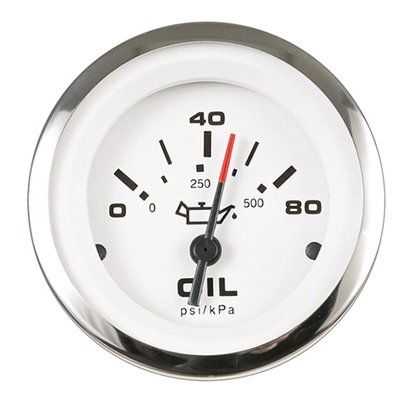
The two types are mechanical gauges and electric gauges. At a glance, the easiest way to differentiate the two is by the yellow knob that mechanical gauges often have. They also have a hose connected, whereas an electrical gauge will not.
Visual differences aside, these two types of gauges are further separated by age. The mechanical gauges came before electrical gauges, and because of this, you will often find mechanical gauges in older vehicles. While this is not always the case, most newer cars do have electric gauges as they are more user-friendly and easier to maintain.
Since both are pressure gauges, the mechanical and electric versions don’t do anything majorly different in terms of their functionality. Each of them provides readings for oil pressure, but the difference is that the level of accuracy is not the same between the two.
The reading on a mechanical gauge is consistent and dependable, but it is less accurate than its electric counterpart, so it naturally requires more maintenance and management to remain in a functional state. In contrast, the electric gauge requires less management, which is why it is more common in newer vehicles.
What Does “Check Low Oil Pressure” Mean?
If you look on the dashboard of your vehicle, you should see the image of an oil container at the bottom left of the speedometer. That is the warning symbol for low oil pressure.
Not all vehicles have the same setup. In some cases, it might be between the speedometer and tachometer, and other times it might be beneath the fuel gauge.
However, regardless of where the low oil pressure warning symbol is, you should always be able to find it relatively easily.
Now that you know what to look for, check if the symbol is alight. If it is, here is a brief list of causes that can potentially trigger the warning light to turn on.
- Low Engine Oil
- Engine Wear
- Pump Wear
- Clogged Engine
- Low Oil Pressure
- Broken/Deficient Oil Pressure Gauge
- Internal Oil Leak
- Faulty Wirings
There are a few different conditions regarding the state of your vehicle that might cause the low oil pressure light to come on.
Depending on the vehicle, the PSI will drop below 5 – 10 when idle, and this will cause the low oil pressure light to come on. If your vehicle is off and won’t turn on, but the low oil pressure light comes on, that usually means that the oil pressure is indeed low. However, it can also mean that something else is wrong internally.
A blinking low oil pressure light might indicate your vehicle’s engine being low on oil, or it could be the result of a faulty oil sensor. Additionally, a defective oil sensor might cause the oil light to come on when you engage the brake or acceleration.
If the low oil pressure light comes on when you start your vehicle, it likely means that the engine oil level is low, making it the most straightforward cause to pin down. Lastly, suppose you see the low oil pressure light come on when you make a turn with the vehicle. In that case, it means that the oil level is low to the point where turning causes the oil to move around and leave the oil tubes unlubricated.
Three Symptoms of Low Oil Pressure
So, aside from the low oil pressure warning light coming on, what are some others signs you can keep a lookout for to detect low oil pressure?
Engine Noise
If you hear noises coming from your engine, particularly strange noises or noises that you know it should not be making, that is a telltale sign that something is wrong. The lack of oil means your engine has less to work with and thus cannot carry out its function as effectively without stressing itself.
In this instance, stop driving as soon as possible to avoid further engine damage.
Engine Overheating
Normally, an engine can maintain a specific temperature with the help of coolant, but sometimes low oil pressure will cause its temperature to skyrocket. Because oil helps lubricate the engine and prevent lots of friction, without it, the engine will naturally grow hotter and hotter the more it works.
The easiest way to check for an overheating engine is to check the hood of your car and see if it’s warmer than usual.
Leaking Oil
Oil leaks are harder to detect than an overheating engine or strange engine noises, but they also cause low oil pressure levels over time.
You can look under your car to see if there is an oil leak, but the oil might not always make it outside of your vehicle. Sometimes, it might leak onto the exhaust system and start burning, which will lead to a burning smell that you can use to detect the issue.
As with the previous two symptoms, it is always best to stop driving the vehicle as soon as possible if you detect an oil leak. That way, you can avoid further damaging it before remedying the issue.
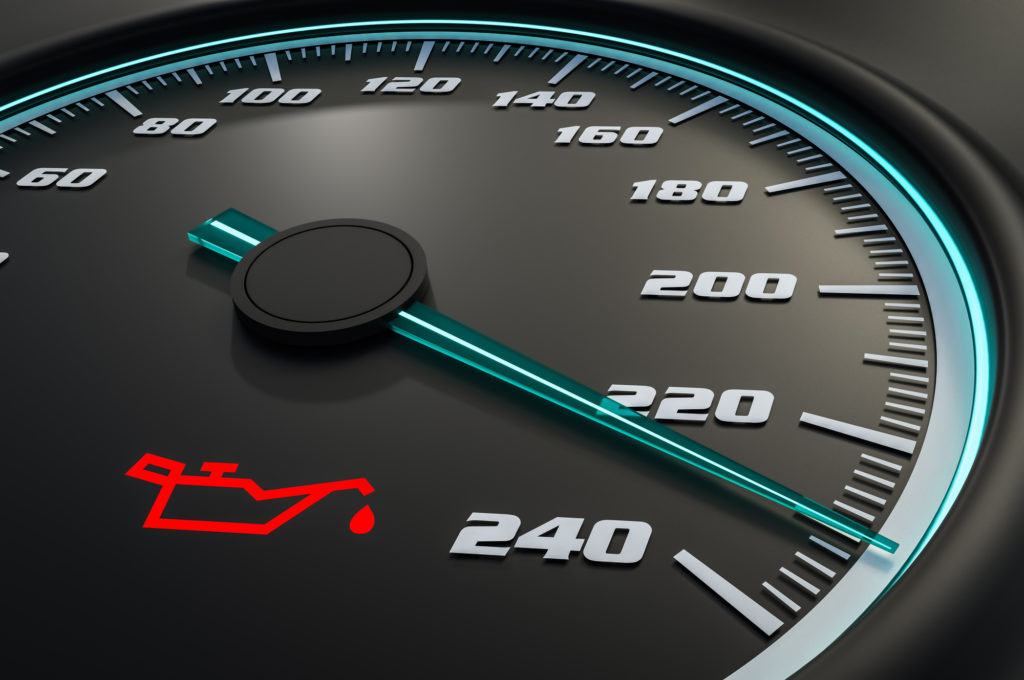
How To Fix Low Oil Pressure Light
Here are some quick points you can use when you see the low oil pressure light come on.
- If the oil level is low, refill it with oil that has the viscosity rating recommended by your vehicle’s manufacturer.
- If there is an oil leak, seek professional help from a company that handles automotive repairs.
- If the engine itself is damaged or another part of the vehicle that affects the oil system, have the part replaced and see how the vehicle then performs.
After maintenance, the oil pressure light might remain on. To reset it, turn your key in the ignition to the on position and hold off on starting the engine. Next, depress the gas pedal three times in succession and turn the ignition on and off. The system will then reset, and the low oil pressure light should remain off.
Suppose you find yourself needing to wire your low oil pressure light for some reason. In that case, your best bet is to seek the help of a professional once again, especially if you are not familiar with the inner workings of an automobile.
The process is rather complex as it requires multiple steps and tools, so avoid attempting it alone.
The cost of having a professional fix your low oil pressure issue will vary depending on both where you go for help and what is causing the problem. However, you should expect to pay somewhere between $120 and $200 on average.
FAQs
Causes, symptoms, and fixes aside, here are some more questions and answers to help you with any low oil pressure light problems you might have!
What is considered a normal oil pressure?
Ideally, your oil pressure should stay between 25-65 PSI. However, do note that this can differ depending on the type of vehicle.
What makes oil pressure drop?
Low oil levels, overheating engine, old oil or bad oil in the engine, damaged oil filter, faulty pumps and a number of other variables can cause oil pressure to drop either gradually or drastically.
How many miles can I drive with the low oil pressure light on?
The less you drive when the low oil pressure light is on, the better, but if you absolutely must drive under that condition, then avoid going any further than 500 miles. Otherwise, you may do irreparable damage to your vehicle’s engine.
Why is my low oil pressure light on when my oil is full?
If the low oil pressure light is on even when your vehicle is full-on oil, then the issue is likely mechanical. It may also signify an oil leak or dirty oil, both of which you will want to tend to as soon as possible.
Why is my low oil pressure light on at a low RPM?
When the low oil pressure light comes on at low rpm and not high rpm, this often means that something is wrong with the sensor that tells the light when to turn on. In the worst-case scenario, it means that your oil pump is faulty and may need replacing.
Why is my oil pressure low after an oil change?
Having the wrong oil level in a vehicle can cause low oil pressure after an oil change. This rarely happens, but if you run into a situation where you get an oil change and see that the low oil pressure light is on, check to make sure the oil level is not too high. While having too little oil causes problems, having an excess of it is also not good.

